The Best Flowering Plants for Hanging Baskets
Discovering the ideal flowering plants that thrive in hanging baskets can truly transform your outdoor spaces into vibrant displays of color and fragrance. Imagine stepping outside to be greeted by a cascade of blossoms, each one adding a unique flair to your garden. Hanging baskets not only save space but also allow you to elevate your gardening game, quite literally! Whether you're a seasoned gardener or just starting out, choosing the right plants is essential for creating a stunning visual impact. In this article, we’ll explore various options that will enhance your gardening experience and aesthetics, ensuring your hanging baskets are the talk of the neighborhood.
Selecting the appropriate plants is crucial for successful hanging baskets. Factors like sunlight, climate, and maintenance requirements play a significant role in ensuring your plants flourish beautifully. For instance, if your hanging baskets are positioned in a sunny spot, you’ll want to choose plants that thrive in full sun, while those in shaded areas will require different selections. Additionally, understanding your local climate can help you pick plants that will not only survive but thrive, creating a lush display throughout the season. It’s like matching the right outfit for an occasion; the right plants will make your garden shine!
Now, let’s dive into some of the most popular flowering plants suitable for hanging baskets. Each of these options brings unique colors and growth habits that can truly transform your garden into a vibrant oasis. From the cheerful petunias to the elegant fuchsias, you have a wealth of choices to consider. Here’s a closer look at some favorites:
Petunias are beloved for their vibrant colors and ability to bloom all season long. They thrive in full sun and come in various varieties, making them a versatile choice for hanging baskets. Imagine a basket overflowing with shades of purple, pink, and white—it's a sight that can brighten anyone's day! These flowers are not only beautiful but also hardy, making them a go-to for many gardeners.
Trailing petunias are perfect for hanging baskets due to their cascading growth habit. They create a stunning waterfall effect that can make your garden look like a floral masterpiece. Available in numerous colors, these petunias add charm and elegance to any outdoor setting. Picture them tumbling over the sides of a basket, creating a colorful curtain of blooms that dances in the breeze.
On the other hand, grandiflora petunias feature large, showy blooms that make a bold statement. These plants are ideal for creating eye-catching arrangements in hanging baskets, attracting attention with their stunning appearance. If you want your hanging baskets to be the centerpiece of your garden, grandiflora petunias will certainly do the trick!
Fuchsias are known for their unique, drooping flowers that add elegance to any hanging basket. They prefer partial shade and can thrive in cooler climates, making them a favorite among gardeners. The delicate, bell-shaped blooms come in various colors, creating a whimsical look that can enchant anyone who passes by. It’s like having tiny lanterns hanging in your garden, lighting up your outdoor space with their charm.
Proper care and maintenance are essential for the health of your hanging basket plants. Regular watering, fertilizing, and pruning will ensure vibrant blooms throughout the growing season. Think of it as nurturing a friendship; the more attention you give, the more it flourishes! Make it a habit to check on your plants regularly, and you'll be rewarded with a stunning display.
Understanding the watering needs of your plants is vital. Overwatering or underwatering can lead to poor growth, so it's important to find the right balance for your hanging baskets. A good rule of thumb is to check the soil moisture regularly; if the top inch feels dry, it’s time to water. It’s like giving your plants a refreshing drink—just enough to keep them hydrated without drowning them!
Fertilizing your hanging basket plants promotes healthy growth and abundant blooms. Using the right type of fertilizer at the appropriate intervals can significantly enhance plant performance. Think of fertilizer as a nutritious meal for your plants; it provides them with the essential nutrients they need to thrive. Aim to fertilize every few weeks during the growing season to keep your plants in tip-top shape!
- What are the best plants for full sun hanging baskets? Petunias, geraniums, and verbena are excellent choices for sunny locations.
- How often should I water my hanging baskets? Typically, you should water when the top inch of soil feels dry, which may vary depending on the weather.
- Can I use regular potting soil for hanging baskets? Yes, but consider using a lightweight potting mix designed for hanging baskets for better drainage.
- What should I do if my plants are not blooming? Check for proper sunlight, watering, and consider fertilizing to encourage blooming.
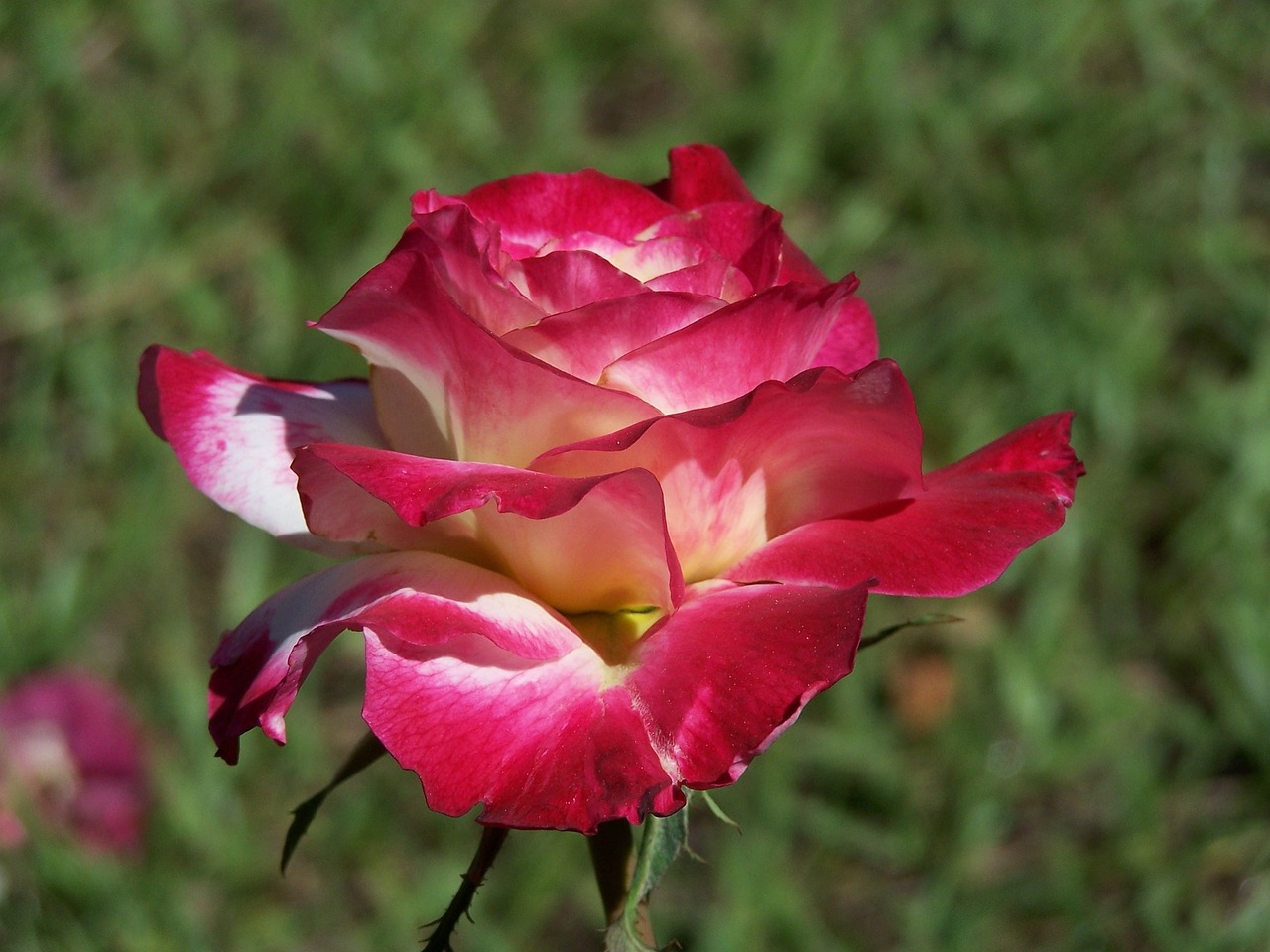
Choosing the Right Plants
When it comes to creating stunning hanging baskets, is absolutely vital. Think of your hanging basket as a work of art; the plants are your colors, and the right combination will create a masterpiece that catches the eye and brings joy. But how do you select the best plants for your unique outdoor space? Well, there are several factors to consider, and each one plays a crucial role in ensuring your plants not only survive but thrive.
First and foremost, consider the amount of sunlight your hanging baskets will receive. Different plants have varying light requirements, so it’s essential to match the plant’s needs with the conditions of your garden. For instance, if your baskets will be hanging in a spot that basks in full sun for most of the day, opt for sun-loving varieties like petunias or geraniums. On the other hand, if your baskets will be in partial shade, consider plants like fuchsias or begonias that flourish in less direct sunlight.
Next up is climate. Your local weather conditions can significantly impact plant growth. If you live in a cooler climate, you might want to choose plants that can tolerate these conditions without wilting away. For warmer regions, heat-resistant varieties will be your best friends. Understanding your climate will help you make informed decisions, ensuring that your baskets are filled with plants that won’t just survive but will dazzle with their beauty.
Another important aspect is maintenance. Some plants require more attention than others, so it’s essential to choose varieties that fit your lifestyle. If you’re a busy bee with little time for gardening, look for low-maintenance options that still provide a burst of color. On the flip side, if you enjoy spending time tending to your plants, you might want to experiment with more demanding species that require regular care and attention.
To make your selection process easier, here’s a quick table summarizing the essential factors to consider when choosing plants for your hanging baskets:
| Factor | Considerations |
|---|---|
| Sunlight | Full sun, partial shade, or full shade |
| Climate | Cool, temperate, or warm regions |
| Maintenance | Low-maintenance vs. high-maintenance plants |
Finally, don’t forget about the visual appeal. Think about how the colors and textures of different plants will complement each other in your hanging baskets. Mixing trailing plants with upright varieties can create a beautiful layered effect that adds depth and interest. Imagine the vibrant hues of petunias cascading over the edge of your basket, paired with the elegant blooms of fuchsias peeking out from above. It’s all about creating a harmonious balance that reflects your personal style.
In summary, choosing the right plants for your hanging baskets involves a careful consideration of several factors, including sunlight, climate, maintenance, and visual appeal. By taking the time to understand your garden's conditions and your personal preferences, you can create stunning displays that will brighten up any outdoor space and provide a feast for the eyes.
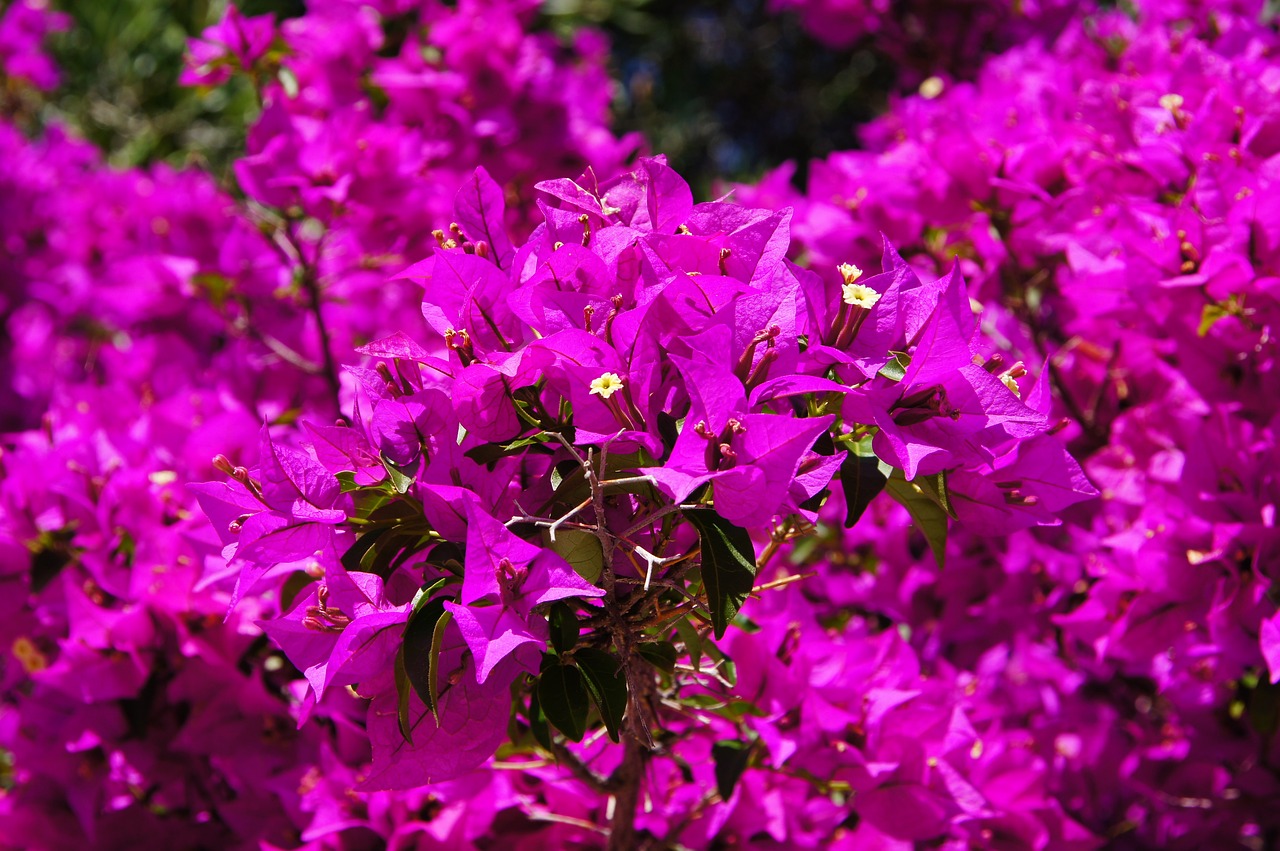
Popular Flowering Plants
When it comes to adding a burst of color and life to your hanging baskets, there are a plethora of flowering plants that can truly transform your outdoor space. These plants not only provide visual appeal but also introduce delightful fragrances that can elevate your gardening experience. Among the many options available, a few stand out as favorites among gardeners. Let’s dive into some of the most popular flowering plants that are perfect for hanging baskets, each offering its own unique charm and personality.
One of the top contenders is the petunia. Known for their vibrant colors and prolific blooming, petunias are a gardener's delight. They thrive in full sun, making them ideal for bright, sunny spots in your garden. With a variety of types such as trailing and grandiflora petunias, you can easily find the perfect fit for your hanging baskets. Trailing petunias, for instance, are perfect for creating a stunning cascading effect, while grandiflora petunias showcase large, eye-catching blooms that draw attention from afar.
Next on our list is the elegant fuchsia. These plants are characterized by their unique, drooping flowers that come in a range of colors, often resembling delicate lanterns. Fuchsias prefer partial shade, making them an excellent choice for hanging baskets in cooler, shaded areas of your garden. They are not just beautiful; their ability to thrive in less than full sun makes them a versatile option for various garden settings.
Another noteworthy mention is the geranium. Geraniums are known for their robust nature and stunning clusters of flowers, which can range from soft pastels to vivid hues. They are relatively low-maintenance and can tolerate varying weather conditions, making them a reliable choice for hanging baskets. Their bushy growth habit adds fullness to your arrangements, ensuring that your baskets look lush and vibrant throughout the blooming season.
To give you a clearer picture, here’s a quick comparison of these popular flowering plants:
| Plant Type | Light Requirements | Growth Habit | Color Varieties |
|---|---|---|---|
| Petunia | Full Sun | Trailing & Upright | Various Vibrant Colors |
| Fuchsia | Partial Shade | Trailing | Pink, Purple, Red, White |
| Geranium | Full Sun to Partial Shade | Bushy | Red, Pink, White, Lavender |
In summary, choosing the right flowering plants for your hanging baskets can significantly enhance the aesthetic appeal of your garden. Whether you opt for the vibrant petunias, the elegant fuchsias, or the robust geraniums, each plant brings its own unique flair to your outdoor space. The key is to consider the specific needs of each plant, such as light and water requirements, to ensure they thrive and continue to bloom beautifully throughout the season.
Q: How often should I water my hanging basket plants?
A: The frequency of watering depends on the type of plants and the climate. Generally, hanging baskets may require watering every 1-3 days, especially in hot weather. Always check the soil moisture before watering.
Q: Can I mix different types of flowering plants in one hanging basket?
A: Yes! Mixing different types of plants can create a beautiful and diverse arrangement. Just ensure that the plants have similar light and water requirements for the best results.
Q: What type of fertilizer is best for hanging basket plants?
A: A balanced, water-soluble fertilizer works well for hanging baskets. Look for one with equal parts nitrogen, phosphorus, and potassium (N-P-K) to promote healthy growth and blooming.

Petunias
Discover the ideal flowering plants that thrive in hanging baskets, adding vibrant colors and delightful fragrances to your outdoor spaces. Explore various options to enhance your gardening experience and aesthetics.
Selecting the appropriate plants is crucial for successful hanging baskets. Factors like sunlight, climate, and maintenance requirements play a significant role in ensuring your plants flourish beautifully.
Explore some of the most popular flowering plants suitable for hanging baskets, including petunias, geraniums, and fuchsias. Each offers unique colors and growth habits that can transform your garden.
Petunias are beloved for their vibrant colors and ability to bloom all season long. These stunning flowers are not just a feast for the eyes; they also bring a delightful fragrance that can elevate the ambiance of any outdoor space. They thrive in full sun, making them perfect for bright, sunny locations. With a variety of species available, petunias can cater to different aesthetic preferences and garden designs.
One of the best things about petunias is their versatility. They come in a wide range of colors, from deep purples to bright pinks, and even bi-colored varieties. This means you can mix and match them to create a visually striking arrangement in your hanging baskets. Imagine a cascade of colors flowing down from your porch—it's like having a piece of nature's artwork right outside your window!
Moreover, petunias are relatively low-maintenance, making them an excellent choice for both novice and experienced gardeners. They can adapt to various soil types, but they do prefer well-drained soil enriched with organic matter. Regular deadheading—removing spent blooms—will encourage new growth and prolong the blooming period, ensuring your hanging baskets remain vibrant throughout the season.
Trailing petunias are perfect for hanging baskets due to their cascading growth habit. They create a stunning waterfall effect that can make any space feel more inviting. Available in numerous colors, trailing petunias can complement any garden theme, whether you're going for a classic look or something more modern. These plants not only add beauty but also bring a sense of movement to your outdoor decor.
Grandiflora petunias feature large, showy blooms that make a bold statement. These plants are ideal for creating eye-catching arrangements in hanging baskets, attracting attention with their stunning appearance. If you're looking to make a splash in your garden, grandiflora petunias are the way to go. They thrive in sunny spots and, with the right care, can produce an abundance of flowers that will surely impress your guests.
Proper care and maintenance are essential for the health of your hanging basket plants. Regular watering, fertilizing, and pruning will ensure vibrant blooms throughout the growing season.
Understanding the watering needs of your plants is vital. Overwatering or underwatering can lead to poor growth, so it's important to find the right balance for your hanging baskets.
Fertilizing your hanging basket plants promotes healthy growth and abundant blooms. Using the right type of fertilizer at the appropriate intervals can significantly enhance plant performance.
Q: How often should I water my petunias in hanging baskets?
A: Petunias generally require watering every 2-3 days, but this can vary based on weather conditions. Always check the soil moisture before watering.
Q: Can I mix petunias with other plants in my hanging baskets?
A: Yes! Petunias pair well with other flowers like geraniums and fuchsias, creating a beautiful and diverse arrangement.
Q: Do petunias need full sun?
A: Yes, petunias thrive in full sun, ideally receiving at least 6 hours of sunlight each day for optimal growth.
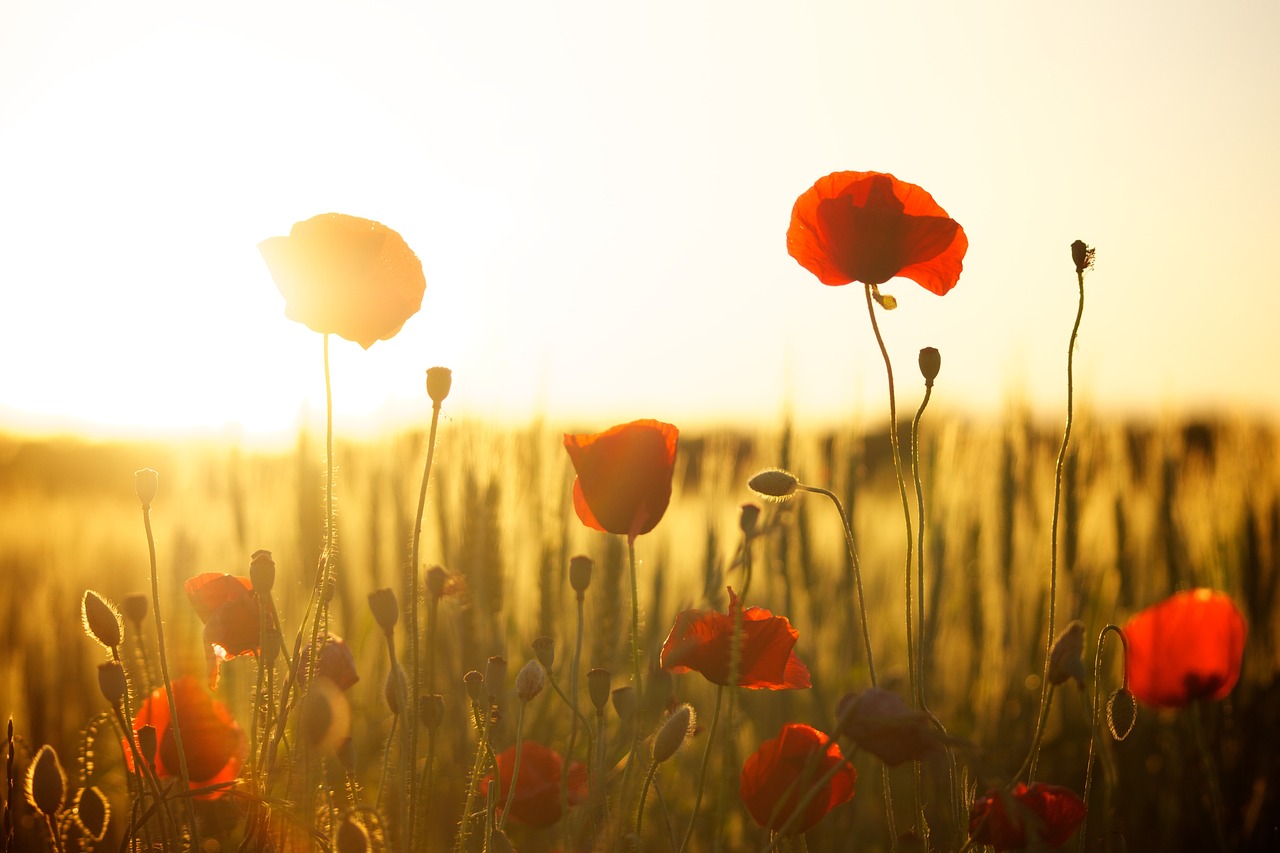
Trailing Petunias
Trailing petunias are nothing short of a garden superstar! With their stunning cascading growth habit, these plants create a breathtaking waterfall effect that can transform any hanging basket into a vibrant focal point. Imagine walking into your garden and being greeted by a cascade of colors that dance in the breeze; that’s the magic trailing petunias bring! They are available in a wide array of colors, from soft pastels to bold, vibrant hues, allowing you to mix and match for a truly personalized display.
One of the best things about trailing petunias is their versatility. They thrive in full sun, making them perfect for hanging baskets that are placed in sunny spots. However, they can also tolerate partial shade, which means you can get creative with their placement. Whether you’re hanging them on a porch, balcony, or in your garden, they will bring a splash of color and joy wherever they bloom. Plus, their ability to bloom all season long means you’ll enjoy their beauty from spring until the first frost!
When it comes to care, trailing petunias are relatively low-maintenance. They appreciate well-drained soil and benefit from regular watering, especially during hot summer days. A good rule of thumb is to water them when the top inch of soil feels dry. Overwatering can lead to root rot, so it’s essential to strike that perfect balance. To keep them looking their best, don’t forget to deadhead spent blooms; this encourages more flowers to grow, ensuring your hanging baskets remain full and lively.
In terms of pairing, trailing petunias work wonderfully with a variety of other plants. Consider mixing them with fuchsias or lobelias for a stunning contrast in textures and colors. The combination can create a visually appealing display that captures the attention of anyone passing by. Additionally, trailing petunias can be used effectively in container gardening, where their draping nature can soften the edges of pots and create a lush, overflowing look.
In summary, if you’re looking to add a touch of elegance and vibrancy to your outdoor spaces, trailing petunias should be at the top of your list. Their stunning appearance, ease of care, and ability to thrive in various conditions make them a perfect choice for hanging baskets. So, why not bring home some trailing petunias today and let your garden shine?
- How often should I water trailing petunias? It’s best to water them when the top inch of soil feels dry, typically every few days, depending on the weather.
- Do trailing petunias need full sun? Yes, they thrive in full sun but can tolerate partial shade as well.
- Can I mix trailing petunias with other plants? Absolutely! They pair well with fuchsias, lobelias, and many other flowering plants.
- How do I encourage more blooms? Regular deadheading of spent flowers will encourage the plant to produce more blooms throughout the season.

Grandiflora Petunias
Grandiflora petunias are truly the stars of the hanging basket world, known for their large, showy blooms that can turn any ordinary space into a vibrant spectacle. Imagine cascading petals in hues of purple, pink, red, and white, each bloom larger than the last, creating a stunning display that catches the eye from afar. These beauties thrive in full sun, which means they love basking in those warm rays, making them perfect for brightening up patios, balconies, or any outdoor area that could use a splash of color.
What sets grandiflora petunias apart is their bold presence and ability to create a dramatic impact. When planted in hanging baskets, they can create a veritable explosion of color, drawing attention and admiration from passersby. Their robust growth habit allows them to spill over the edges of the basket, creating a lush, full appearance that enhances any garden setting. Plus, with proper care, these petunias will bloom continuously throughout the growing season, ensuring that your outdoor space remains vibrant and lively.
However, it's essential to note that while grandiflora petunias are relatively easy to care for, they do require some attention to thrive. Here are a few key points to consider:
- Watering: They prefer consistently moist soil, but be careful not to overwater as this can lead to root rot.
- Fertilizing: Regular feeding with a balanced fertilizer will help promote those magnificent blooms.
- Pruning: Deadheading spent flowers will encourage new growth and prolong the blooming period.
In conclusion, if you're looking to add a touch of elegance and vibrancy to your hanging baskets, grandiflora petunias are an excellent choice. They not only provide stunning visuals but also create a welcoming atmosphere that can transform your outdoor space into a floral paradise. With their easy care requirements and continuous blooming, they are sure to become a favorite among gardeners and flower enthusiasts alike.
Q: How often should I water my grandiflora petunias?
A: It's best to water them when the top inch of soil feels dry. Generally, this could be every 2-3 days, depending on the weather.
Q: Can grandiflora petunias survive in partial shade?
A: While they prefer full sun, they can tolerate partial shade, but their blooming may be less vigorous.
Q: What is the best fertilizer for grandiflora petunias?
A: A balanced, water-soluble fertilizer is ideal. Fertilize every 4-6 weeks for optimal growth.
Q: How can I encourage more blooms on my petunias?
A: Regular deadheading, adequate watering, and proper fertilization will help promote a continuous display of beautiful blooms.
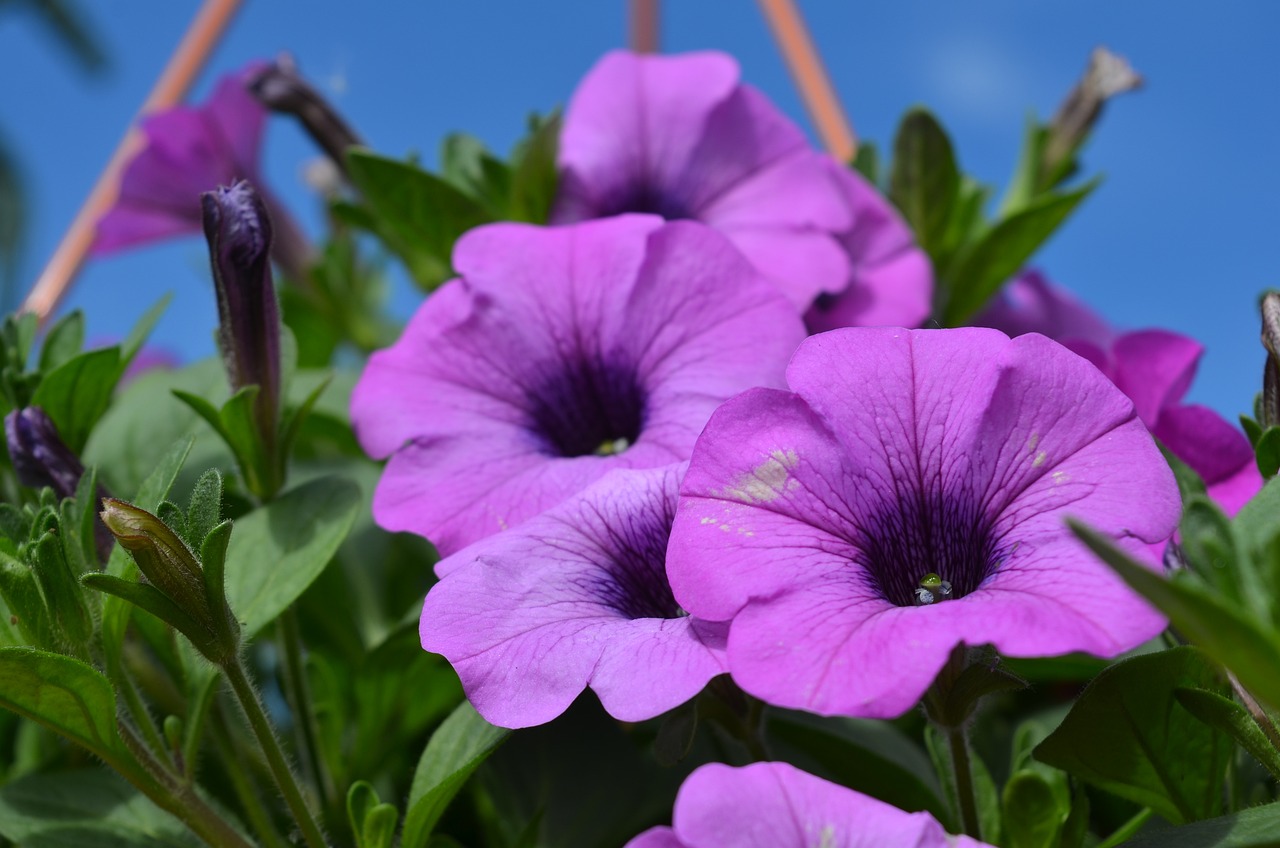
Fuchsias
Fuchsias are truly a gardener's delight, known for their elegant, drooping flowers that can add a touch of sophistication to any hanging basket. These plants are not just beautiful; they also have specific needs that make them unique in the world of flowering plants. Fuchsias thrive in partial shade, which means they are perfect for those spots in your garden that receive filtered sunlight. This characteristic makes them ideal for hanging baskets positioned under trees or on covered patios, where other sun-loving plants might struggle.
One of the most appealing aspects of fuchsias is their variety of colors. From deep purples to vibrant pinks and whites, these flowers can create a stunning visual display. The contrast between the lush green foliage and the bright blooms can transform your outdoor space into a vibrant oasis. Imagine walking into your garden and being greeted by a cascade of fuchsia blooms, dancing in the gentle breeze—it's a sight that can lift your spirits instantly!
Moreover, fuchsias are relatively easy to care for, making them a favorite among both novice and experienced gardeners. They prefer cooler climates, which means they can flourish even in areas where other plants might wilt under the heat. To ensure your fuchsias thrive, it's essential to keep the soil consistently moist but not soggy. Overwatering can lead to root rot, while underwatering can cause the plants to wilt and lose their beautiful flowers. Striking the right balance is key!
When it comes to fertilization, fuchsias benefit from a balanced, water-soluble fertilizer applied every few weeks during the growing season. This practice promotes healthy growth and encourages an abundance of blooms. Additionally, regular deadheading—removing spent flowers—can help prolong the blooming period, ensuring that your hanging baskets remain a focal point of beauty throughout the summer months.
Fuchsias are also known to attract pollinators, such as hummingbirds and bees, which can add an extra layer of life to your garden. This makes them not only a visual treat but also a vital part of the ecosystem. If you're looking for a way to enhance your garden's biodiversity while enjoying stunning floral displays, fuchsias are an excellent choice.
In summary, fuchsias are more than just pretty flowers; they are a versatile addition to any hanging basket. With their stunning colors, unique growth habits, and relatively easy care requirements, they can turn any outdoor space into a vibrant paradise. So, why not give fuchsias a try? You might just find that they become one of your favorite flowering plants!
- What type of light do fuchsias need? Fuchsias thrive best in partial shade, making them ideal for spots with filtered sunlight.
- How often should I water fuchsias? Keep the soil consistently moist but avoid overwatering to prevent root rot.
- Can fuchsias survive in hot climates? Fuchsias prefer cooler temperatures and may struggle in extremely hot climates.
- How do I promote more blooms on my fuchsias? Regular deadheading and applying a balanced fertilizer can help encourage more blooms.
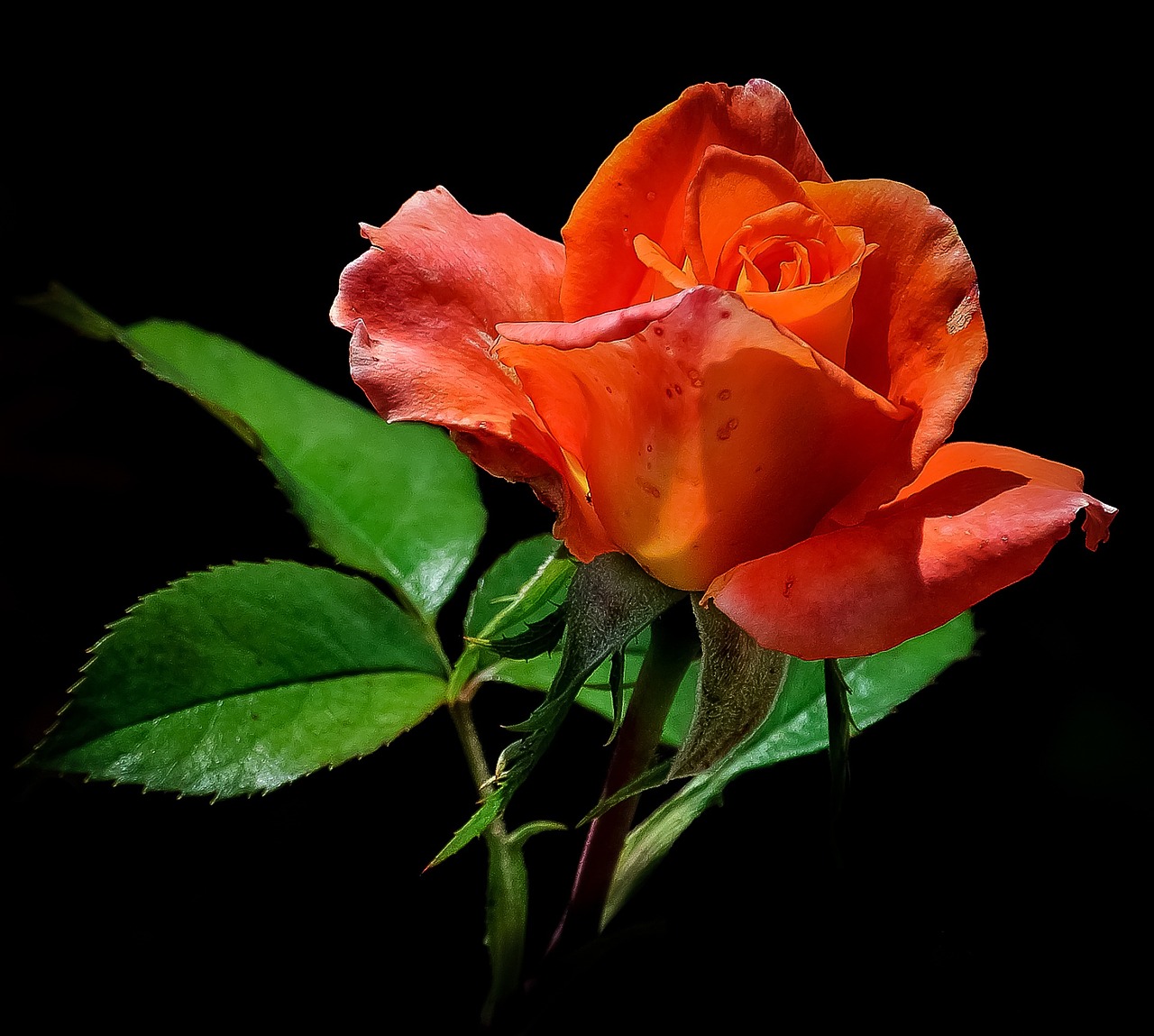
Care and Maintenance
Proper care and maintenance are essential for the health and beauty of your hanging basket plants. Just like a delicate piece of art, these plants require attention to detail to truly thrive. Regular watering, fertilizing, and pruning will ensure that your flowers remain vibrant and lush throughout the growing season. Think of your hanging baskets as a canvas; the more care you put into them, the more beautiful the final masterpiece will be!
First and foremost, let’s talk about watering. Understanding the watering needs of your plants is vital. Overwatering can lead to root rot, while underwatering can cause your plants to wilt and die. It’s a delicate balance, much like finding the right rhythm in a dance. The frequency of watering will depend on factors such as the type of plants you have, the size of the basket, and the climate. Generally, it’s best to check the soil moisture regularly. If the top inch of soil feels dry, it’s time to give your plants a drink. Remember, it’s better to water deeply and less frequently than to give them a little splash every day.
Next on the list is fertilizing your plants. Just like humans need a balanced diet, your plants require nutrients to flourish. Fertilizing your hanging basket plants promotes healthy growth and abundant blooms. A good rule of thumb is to use a balanced, water-soluble fertilizer every couple of weeks during the growing season. This will provide the essential nutrients your plants need to produce those stunning blooms that make your hanging baskets the envy of the neighborhood. Be cautious, though; over-fertilizing can be just as harmful as under-fertilizing, so always follow the instructions on the fertilizer package.
Another aspect of maintenance is pruning. Regular pruning helps to encourage bushier growth and can prevent your plants from becoming leggy. Think of it as giving your plants a stylish haircut! Trim away any dead or yellowing leaves, and don’t hesitate to pinch back the tips of stems to promote fuller growth. This simple act can make a world of difference in the overall appearance of your hanging baskets.
Lastly, keep an eye out for pests and diseases. Just like a vigilant gardener, you should regularly inspect your plants for any signs of trouble. Common pests like aphids or spider mites can wreak havoc on your beautiful blooms. If you notice any issues, act quickly! Use insecticidal soap or neem oil to treat infestations before they get out of hand. Prevention is key, so maintaining good airflow and avoiding overcrowding in your baskets will help keep pests at bay.
In summary, the care and maintenance of your hanging basket plants can be compared to nurturing a delicate relationship. With the right amount of attention, love, and resources, your plants will reward you with a stunning display of colors and fragrances that will brighten your outdoor spaces.
- How often should I water my hanging baskets?
Watering frequency depends on the climate and type of plants. Generally, check the soil moisture daily and water when the top inch feels dry. - What type of fertilizer is best for hanging basket plants?
A balanced, water-soluble fertilizer is ideal. Fertilize every couple of weeks during the growing season for optimal results. - Can I use the same plants in all my hanging baskets?
While you can use the same plants, mixing different varieties can create a more visually appealing arrangement. Just ensure they have similar care requirements. - How do I prevent pests on my hanging plants?
Regularly inspect your plants, maintain good airflow, and use insecticidal soap or neem oil if you notice any pests.
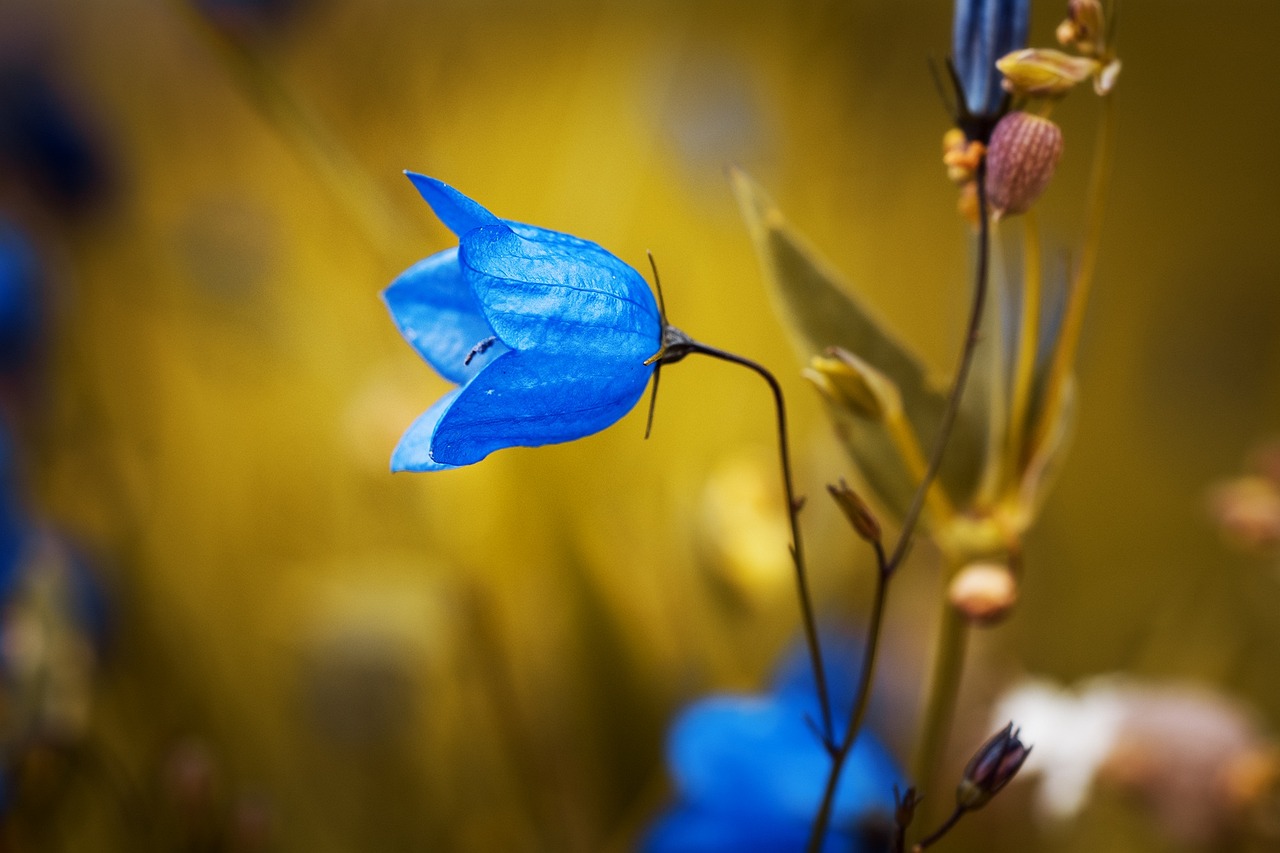
Watering Techniques
When it comes to the health and vibrancy of your hanging basket plants, can make all the difference. Imagine your plants as little thirsty friends; they need just the right amount of water to thrive. Too little, and they’ll wilt like a sad puppy; too much, and they’ll drown in their own pot—literally! So, how do you strike the perfect balance? Let’s delve into some essential watering tips that will keep your floral friends happy and blooming.
First and foremost, check the moisture level of your soil before watering. A simple finger test can help you determine whether your plants need a drink. Stick your finger about an inch into the soil; if it feels dry, it’s time to water. If it’s still moist, hold off for a day or two. This method not only saves water but also helps prevent overwatering, which is a common issue for many gardeners.
Next, consider the time of day you choose to water. Early morning is often the best time, as it allows plants to absorb moisture before the heat of the day causes evaporation. Watering in the evening can lead to fungal diseases, as the moisture sits on the leaves overnight. So, rise and shine with your watering can!
When watering your hanging baskets, aim to water deeply but less frequently. This encourages the roots to grow deeper into the soil, making your plants more resilient. A good rule of thumb is to water until you see some runoff from the bottom of the basket. This ensures that the entire root system gets the hydration it needs. However, be cautious not to let your plants sit in standing water, as this can lead to root rot.
For those with multiple hanging baskets, a drip irrigation system can be a game-changer. This method delivers water directly to the soil at a consistent rate, ensuring that your plants receive just the right amount of moisture. Plus, it saves you time, allowing you to enjoy your garden without constant watering duties.
Lastly, keep an eye on the weather. During hot and dry spells, your plants may require more frequent watering, while rainy days can provide enough moisture on their own. Adapting your watering schedule to the climate will help keep your plants healthy and vibrant. Remember, every plant is unique, and getting to know their specific needs will lead to a flourishing hanging basket garden!
- How often should I water my hanging baskets? It depends on the plant type and weather conditions, but generally, check the soil moisture every few days.
- What is the best time of day to water? Early morning is ideal to prevent evaporation and fungal diseases.
- Can I use tap water for my plants? Yes, but let it sit for 24 hours to allow chlorine to dissipate before watering.
- How do I know if I've overwatered my plants? Signs include yellowing leaves, wilting, and a soggy soil texture.
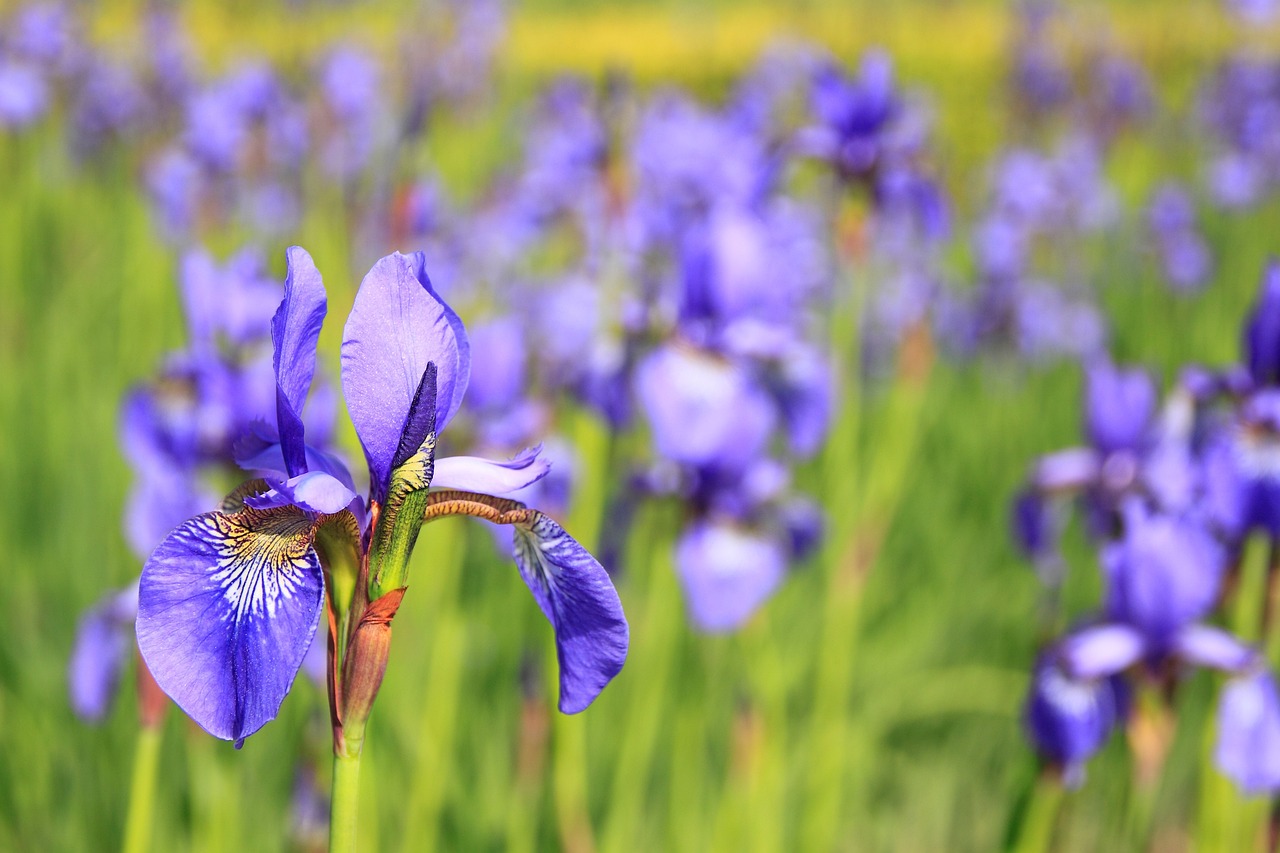
Fertilizing Your Plants
When it comes to keeping your hanging basket plants healthy and vibrant, fertilization plays a crucial role. Just like we need a balanced diet to thrive, your plants require the right nutrients to grow strong and produce those stunning blooms that make hanging baskets so appealing. The key is to understand which type of fertilizer to use and when to apply it.
First off, consider the type of fertilizer that best suits your plants. There are generally two categories: liquid fertilizers and granular fertilizers. Liquid fertilizers are often easier to apply and can provide a quick nutrient boost, while granular fertilizers offer a slow-release option that feeds your plants over time. For hanging baskets, a balanced, water-soluble fertilizer with equal parts nitrogen, phosphorus, and potassium (often called N-P-K) is ideal. This ensures that your plants receive a well-rounded diet.
Timing is everything. Generally, you should fertilize your hanging baskets every 4-6 weeks during the growing season. However, if you notice that your plants are looking a bit lackluster or their growth seems stunted, don’t hesitate to give them a little extra love. A good rule of thumb is to fertilize after watering, as this helps the nutrients penetrate the soil more effectively without overwhelming the roots.
Now, let’s not forget about the importance of organic fertilizers. Many gardeners swear by using compost or well-rotted manure as a natural way to enrich their soil. These organic options not only feed your plants but also improve soil structure, which is essential for healthy root development. If you’re looking for a more sustainable approach, consider incorporating organic fertilizers into your routine.
To give you a clearer picture, here's a simple table summarizing the types of fertilizers and their benefits:
| Type of Fertilizer | Application Method | Benefits |
|---|---|---|
| Liquid Fertilizer | Mix with water and apply | Quick nutrient absorption, ideal for immediate needs |
| Granular Fertilizer | Sprinkle on soil surface | Slow-release, long-lasting effects |
| Organic Fertilizer | Incorporate into soil | Improves soil health, sustainable option |
In conclusion, fertilizing your hanging basket plants is not just a chore; it’s a way to show your love and commitment to your garden. By choosing the right type of fertilizer and timing your applications correctly, you can ensure that your plants reach their full potential, bursting with color and life. So, roll up your sleeves, grab that fertilizer, and watch your hanging baskets transform into a stunning display that will leave your neighbors in awe!
- How often should I fertilize my hanging baskets? - Generally, every 4-6 weeks during the growing season is recommended.
- Can I use regular garden fertilizer for my hanging baskets? - Yes, but ensure it is diluted according to the instructions, as hanging baskets typically require less concentrated nutrients.
- What is the best time of day to fertilize? - Early morning or late afternoon is ideal, as this reduces the risk of scorching the plants.
- Are organic fertilizers more effective than chemical ones? - Both can be effective, but organic fertilizers often improve soil health over time.
Frequently Asked Questions
- What are the best flowering plants for hanging baskets?
Some of the best flowering plants for hanging baskets include petunias, geraniums, and fuchsias. These plants not only thrive in various conditions but also offer stunning colors and fragrances that can enhance your outdoor space.
- How do I choose the right plants for my hanging baskets?
When selecting plants for your hanging baskets, consider factors such as sunlight exposure, climate, and maintenance needs. Make sure to choose plants that will thrive in your specific environment to ensure a vibrant display.
- How often should I water my hanging basket plants?
Watering frequency depends on the type of plants and the climate. Generally, check the soil moisture regularly; if the top inch feels dry, it’s time to water. However, be careful not to overwater, as this can lead to root rot.
- Do I need to fertilize my hanging basket plants?
Yes, fertilizing your hanging basket plants is crucial for promoting healthy growth and abundant blooms. Use a balanced, water-soluble fertilizer every 4-6 weeks during the growing season for the best results.
- Can I use the same plants in every hanging basket?
While you can use the same plants in multiple baskets, mixing different varieties can create a more visually appealing display. Consider combining plants with different colors, textures, and growth habits for a stunning effect.
- What should I do if my plants start to wilt?
If your plants are wilting, check the soil moisture first. They may need water, or you could be overwatering. Additionally, ensure they are getting the right amount of sunlight and are not exposed to extreme temperatures.
- Are there any plants that are particularly good for shaded areas?
Yes! Plants like fuchsias and begonias thrive in partial to full shade. They can bring life to those tricky spots where sunlight is limited, making them ideal for shaded hanging baskets.
- How can I create a cascading effect in my hanging baskets?
To achieve a cascading effect, choose trailing varieties such as trailing petunias or lobelia. Plant them towards the edges of the basket so they can spill over, creating a beautiful waterfall of blooms.


















